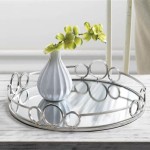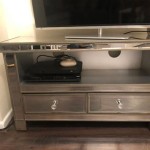Hanging a Mirror on a Wardrobe Door: A Comprehensive Guide
Maximizing space and functionality within a living area often requires creative solutions. Hanging a mirror on a wardrobe door presents a practical way to incorporate a full-length reflection without occupying valuable wall or floor space. This approach is particularly beneficial in smaller bedrooms, apartments, or dressing rooms where traditional mirror placement may be restrictive. However, successfully executing this project requires careful consideration of several factors, including the door's material, the mirror's weight, and the appropriate hanging hardware and techniques. This article provides a detailed exploration of the process, outlining the necessary preparations, methods, and safety precautions to ensure a secure and visually appealing outcome.
Assessing the Door and Mirror
Before commencing the installation, a thorough assessment of both the wardrobe door and the mirror is crucial. The type of material composing the wardrobe door significantly influences the selection of hanging hardware and the overall stability of the installation. Common door materials include solid wood, particleboard, medium-density fiberboard (MDF), and hollow-core construction. Solid wood doors generally offer the most robust support and are compatible with a wider range of hanging methods. Particleboard and MDF doors, while more affordable, may be less durable and require careful consideration of weight distribution to prevent damage or sagging. Hollow-core doors, characterized by their lightweight construction, present the greatest challenge and often necessitate specialized hardware and reinforcement techniques.
The mirror's weight and dimensions are equally important considerations. Larger and heavier mirrors exert greater stress on the door and its hinges, potentially leading to misalignment or even structural failure. It is essential to determine the exact weight of the mirror and compare it to the manufacturer's specifications for the wardrobe door's weight capacity. This information is often found in the wardrobe's documentation or can be obtained from the manufacturer directly. If the mirror's weight exceeds the door's capacity, alternative hanging methods or a different mirror selection may be necessary. Additionally, the mirror's dimensions should be carefully measured to ensure it fits comfortably within the door's surface area, leaving adequate clearance around the edges to prevent obstruction of handles, hinges, or other hardware.
Furthermore, the existing hardware on the wardrobe door, such as hinges and handles, should be inspected for condition and stability. Loose or damaged hinges can compromise the door's structural integrity and increase the risk of the mirror detaching or causing further damage. Replacing or reinforcing weak hinges before installing the mirror is a prudent measure to ensure long-term stability. Similarly, the handles should be securely fastened and positioned in a way that does not interfere with the mirror's placement or usability.
Choosing the Appropriate Hanging Method and Hardware
Selecting the appropriate hanging method and hardware is paramount to a successful and secure mirror installation. Several options are available, each with its own advantages and disadvantages depending on the door material, mirror weight, and desired aesthetic. Double-sided adhesive tape, specifically designed for mirrors, offers a non-invasive solution that eliminates the need for drilling or making permanent alterations to the door. However, this method is typically suitable only for lightweight mirrors and smooth, non-porous surfaces. It is crucial to use high-quality, pressure-sensitive tape that is specifically rated for mirror applications to ensure long-lasting adhesion. The surface should be thoroughly cleaned with an appropriate cleaner like isopropyl alcohol before applying the tape.
Over-the-door hooks provide another convenient and easily reversible option. These hooks typically feature padded contact points to protect the door's surface and are available in various sizes and styles to accommodate different mirror weights and door thicknesses. However, over-the-door hooks may not be suitable for all wardrobe doors, particularly those with unusually thick or ornate moldings. It is important to measure the door's thickness accurately and select hooks that provide a snug and secure fit. Additionally, the mirror's weight should be evenly distributed across multiple hooks to prevent excessive strain on any single point.
For heavier mirrors or doors made of less robust materials, more secure mounting methods may be necessary. These include using specialized mirror mounting clips, which are screwed directly into the door. These clips provide a strong and reliable hold, but require careful drilling and precise placement to avoid damaging the door. When using screws, it is essential to select the appropriate length and type for the door material. Short screws may not provide sufficient grip, while excessively long screws can penetrate through the door and cause damage. For particleboard or MDF doors, it may be necessary to use drywall anchors or similar fasteners to provide additional support and prevent the screws from stripping out. The mirror clips should be spaced evenly around the perimeter of the mirror to distribute the weight and prevent warping or distortion.
Regardless of the chosen method, it is crucial to use high-quality hardware that is specifically designed for mirror installation. Avoid using generic screws or adhesive tapes that may not be strong enough to support the mirror's weight. Investing in durable and reliable hardware will ensure a secure and long-lasting installation, minimizing the risk of accidents or damage.
Preparing the Door and Installing the Mirror
Proper preparation of the wardrobe door is essential for achieving a clean and secure mirror installation. Begin by thoroughly cleaning the door's surface with a mild detergent and water to remove any dirt, grease, or other contaminants. This will ensure optimal adhesion for adhesive tapes or prevent any debris from interfering with the mounting hardware. Allow the door to dry completely before proceeding to the next step.
If using double-sided adhesive tape, carefully apply the tape to the back of the mirror, following the manufacturer's instructions. Ensure that the tape covers a sufficient area to provide adequate adhesion. Press the mirror firmly against the door, applying even pressure across the entire surface. It may be helpful to use painter's tape to temporarily secure the mirror in place while the adhesive cures. Allow the adhesive to cure for the recommended time period before removing the painter's tape.
When using over-the-door hooks, position the hooks at the desired location on the door and carefully hang the mirror. Ensure that the mirror is level and that the hooks are securely seated on the door's edge. Adjust the position of the hooks as necessary to achieve a perfectly aligned reflection. Periodically check the stability of the hooks and mirror to ensure they remain securely in place.
For mirror mounting clips, carefully measure and mark the locations for the screw holes on the door. Use a drill with a bit size appropriate for the screws and anchors being used. Pre-drilling pilot holes can help to prevent the wood from splitting, especially in solid wood doors. Insert the anchors into the pilot holes if necessary, ensuring they are flush with the door's surface. Position the mirror clips over the marked locations and secure them to the door with screws. Carefully slide the mirror into the clips, ensuring it is securely held in place. Adjust the tension of the clips as necessary to provide a snug and secure fit.
After the mirror is installed, thoroughly inspect the installation to ensure it is stable and secure. Gently rock the mirror back and forth to check for any looseness or movement. If any issues are detected, immediately address them by tightening screws, reinforcing the adhesive, or adjusting the placement of the hardware. Regular maintenance, such as periodically checking the tightness of screws and the adhesion of tapes, will help to prevent future problems and ensure the longevity of the installation.
In cases involving hollow-core doors, reinforcement may be necessary to provide sufficient support for the mirror. This can be achieved by inserting wooden blocks or shims into the hollow core behind the mounting points. These blocks will provide a solid surface for the screws to grip, preventing them from pulling out or damaging the door. Alternatively, a thin sheet of plywood or hardboard can be glued to the back of the door to provide a more uniform and stable surface for mounting the mirror. Care should be taken to ensure the added reinforcement does not affect the door's ability to close and latch properly.
Ultimately, hanging a mirror on a wardrobe door offers a functional and aesthetically pleasing solution for maximizing space and enhancing the functionality of a room. By carefully assessing the door and mirror, selecting the appropriate hardware, and following proper installation techniques, a secure and visually appealing result can be achieved.

Framing Out A Mirror That S Mounted On Door Young House Love

How To Install A Mirror On Wardrobe Door

3 Ways To Hang A Door Mirror Wikihow

3 Ways To Hang A Door Mirror Wikihow

50 Diy Home Decor Ideas To Spruce Up Your Instantly Closet Doors Door Makeover Bedroom

Extra Long Full Length Mirror Bedroom Bathroom Wardrobe Over Door Hanging
How To Hang A Mirror On Door 5 Ways Taskrabbit Blog

Diy Barn Door With Mirror Field Court

3 Ways To Hang A Door Mirror Wikihow

20 Mirror Closet And Wardrobe Doors Ideas Mirrored








